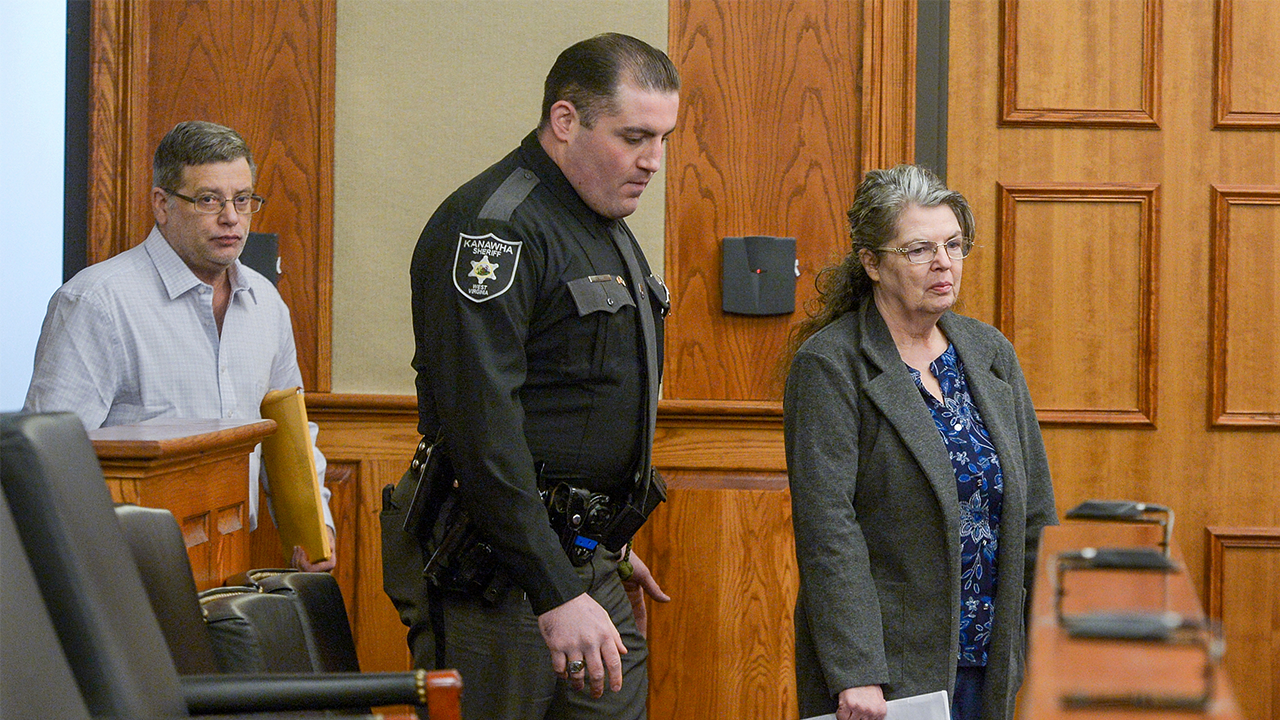California
Survey shows that voters want affordable energy, not California climate politics

While posturing as a champion of American freedom during his tour of Southern states this past spring, California Gov. Gavin Newsom (D) left out that part about how his own administration is attempting to force an expensive climate agenda onto a public that really just does not want it.
In fact, news coverage of Newsom’s visits to Florida, Arkansas, Mississippi, and Alabama suggest that he steered clear of energy policy altogether while lecturing his fellow governors about what he describes as the “authoritarian” tendencies of certain other governors who are running for president.
That might be because the average citizens whom Newsom claims to represent reject his climate schemes and the government mandates that go with them, at least when they are asked clear questions.
Two free-market advocacy organizations — the American Energy Alliance and the Maryland-based Committee to Unleash Prosperity — released a straightforward survey of 1,000 likely voters last month. It showed that, by a wide margin, respondents favored affordable energy over climate policies that raise energy costs and limit consumer choices.
When voters were asked the open-ended question of what the “most pressing issue” is facing the U.S., climate change barely registered. Most people were chiefly concerned about practical questions, such as inflation and the economy.
The survey also asked voters to indicate if they agreed or disagreed with a series of statements concerning energy policy. Sixty-five percent disagreed with the position that “the federal government should impose a tax on carbon dioxide emissions collected at the gas pump and in heating and utility bills.”
Seventy percent disagreed with the statement that they “trust the federal government to decide what kind of cars should be subsidized or mandated.”
And an astounding 82 percent disagreed with the statement that “The state of California should be able to determine what kind of cars can be sold in other states.” Newsom’s position — one long-held by liberals in Washington — is that California can and should leverage its position as the nation’s largest state market, circumventing the federal government and the other 49 states’ democratic processes to do precisely that.
Respondents appeared to be attuned to the real word ramifications of California’s energy policy. The state consistently ranks among the highest in terms of electricity costs, with the average residential electricity rate more than 70 percent higher than the national average. Recent figures from AAA, the national auto club, also show that California average gas price of $4.836 significantly outpaces the national average.
California also has a recent history of power outages that might suggest a course change is in order. Newsom has insisted, unconvincingly and with lots of ad hominem rhetoric, that his pursuit of green energy is not to blame for the blackouts.
The blackouts have already begun to interfere with the state’s aggressive electric vehicle mandate, which bans the sale of non-electric vehicles by 2035. Automakers are already preparing for the financial fallout. Chrysler’s parent outfit, Stellantis, the maker of Jeeps, plans to curtail shipments of gasoline-powered cars to states that adopt California’s emissions rules. California is also leaning on the Biden administration to impose its electric vehicle mandates across the country.
This probably won’t play well politically, as the AEA survey results show that consumers are practical. They want affordable cars and energy. They are skeptical about government climate initiatives that will affect their transportation. This message should help wavering Republican lawmakers resist the easy path of giving in to the demands of environmental extremists.
Asked “who should make decisions about what kind of cars you should be able to buy,” 80 percent of respondents in the AEA survey said that consumers should decide for themselves. Only 8 percent said the federal government should decide for them.
As a follow-up, it would be interesting to learn how the percentages might break down if voters are asked whether Newsom, as a potential presidential candidate, should be permitted to decide what sort of cars, stoves, leaf blowers, air conditioners etc. they should be permitted to buy.
Perhaps Newsom could be asked about this during his next trip to Red State America. After all, wasn’t he saying something about freedom and the dangers of authoritarianism?
Kevin Mooney writes on energy and labor issues for the Heritage Foundation.
Copyright 2023 Nexstar Media Inc. All rights reserved. This material may not be published, broadcast, rewritten, or redistributed.

California
Monterey County declares state of emergency over California battery plant fire; questions remain

California
Biden Heads to California Wine Country for First Post-Presidential Trip

At 11:15 a.m. on Jan. 20, Donald Trump was sworn back into the White House as the 47th President of the United States. And by 2 p.m. on the same day—after a quick farewell visit to Joint Base Andrews—the now-former president, Joe Biden, was on his way to celebrate retirement in Santa Ynez, California.
The central California wine town, made famous as a world-class pinot noir destination in the 2004 film Sideways, is familiar territory for Biden, who spent a few days there in August 2024 after deciding to withdraw from the election. On that trip, he stayed at billionaire pal Joe Kiani’s ranch; his official agenda did not specify where he would stay on this visit, but local news reports say a motorcade was headed in the direction of Kiani’s 8,000-acre estate shortly after Biden’s arrival in town.
California
Trump’s new executive orders target policies dear to CA

With assurances that “sunlight is pouring over the entire world,” President Donald Trump was sworn into office Monday for his second term. He wasted no time taking potshots at California.
During his 30-minute inauguration speech, Trump said the Los Angeles County wildfires, which broke out two weeks ago, burned without “a token of defense.” (This is not true.) After his swearing-in, Trump also accused the state of voter fraud, but provided no evidence, and directed his administration to route more water from the Delta to elsewhere in California, including Southern California.
In response, Gov. Gavin Newsom said his administration “stands ready to work with” Trump and that he is looking forward to Trump’s upcoming visit to L.A. But the governor’s office also responded to Trump’s wildfire comment with photos of California firefighters in action. Last week, Newsom and top legislative Democrats agreed on a $50 million plan to “Trump-proof” the state by fighting his policies in court.
In other Trump news:
Uncertainty at the border: Trump on Monday proclaimed a national emergency at the southern border. He then issued a series of executive orders, including ones to target jurisdictions with sanctuary laws (which presumably includes California) and pull their federal funding; designate drug cartels as “foreign terrorist organizations;” and limit birthright citizenship — the latter of which will likely set up a colossal constitutional fight. A decade ago, more than a quarter of the country’s children born in the U.S. to at least one undocumented parent lived in California.
Amid the flurry of proclamations (with more to come throughout the week), undocumented immigrants braced themselves for the road ahead, reports CalMatters’ Wendy Fry.
One resident who had an ongoing immigration case said he planned to take “no unnecessary trips” between borders. Others — who crossed the border every day for work — said they don’t expect Trump’s executive orders to affect their lives too much, but they do plan to carry proof that they are naturalized U.S. citizens at all times.
Read more here.
CA vs. Trump: And CalMatters’ and Ana B. Ibarra and Ben Christopher dive into California’s legal battles against Trump’s during his first term to see what could lie ahead. Between 2017 and 2021, the state sued the federal administration a total of 123 times. Trump won those cases about a third of the time — a rate that’s lower than the three previous administrations.
But experts say things could be different this time around: Trump could be more strategic and defend his policy decisions in a way that makes it harder to legally challenge.
On the other hand, a 2023 ruling by the conservative-leaning U.S. Supreme Court that makes it easier for businesses and state governments to challenge federal rules (considered at the time a victory for conservatives and Big Business) could ease the path for California’s attorney general to hinder Trump’s administration.
Read more here.
-
/cdn.vox-cdn.com/uploads/chorus_asset/file/25826211/lorealcellbioprint.jpg)
/cdn.vox-cdn.com/uploads/chorus_asset/file/25826211/lorealcellbioprint.jpg) Technology1 week ago
Technology1 week agoL’Oréal’s new skincare gadget told me I should try retinol
-
/cdn.vox-cdn.com/uploads/chorus_asset/file/25832751/2192581677.jpg)
/cdn.vox-cdn.com/uploads/chorus_asset/file/25832751/2192581677.jpg) Technology7 days ago
Technology7 days agoSuper Bowl LIX will stream for free on Tubi
-

 Business1 week ago
Business1 week agoWhy TikTok Users Are Downloading ‘Red Note,’ the Chinese App
-
/cdn.vox-cdn.com/uploads/chorus_asset/file/25835602/Switch_DonkeyKongCountryReturnsHD_scrn_19.png)
/cdn.vox-cdn.com/uploads/chorus_asset/file/25835602/Switch_DonkeyKongCountryReturnsHD_scrn_19.png) Technology5 days ago
Technology5 days agoNintendo omits original Donkey Kong Country Returns team from the remaster’s credits
-

 Culture4 days ago
Culture4 days agoAmerican men can’t win Olympic cross-country skiing medals — or can they?
-
/cdn.vox-cdn.com/uploads/chorus_asset/file/24774110/STK156_Instagram_threads_1.jpg)
/cdn.vox-cdn.com/uploads/chorus_asset/file/24774110/STK156_Instagram_threads_1.jpg) Technology1 week ago
Technology1 week agoMeta is already working on Community Notes for Threads
-

 Culture2 days ago
Culture2 days agoBook Review: ‘Somewhere Toward Freedom,’ by Bennett Parten
-

 Politics5 days ago
Politics5 days agoU.S. Reveals Once-Secret Support for Ukraine’s Drone Industry


















